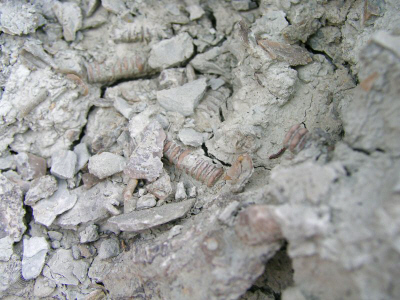
Page 2
The other main objective of collectors that day, was to find crinoids. The method here is a little different than with trilbites. For crinoids, you first look for large quantities of crinoid stems, as seen in the picture below.
Next, you find the layer of shale the crinoids are weathering
from by following the trail of stem fragments up the slope until the trail
stops.
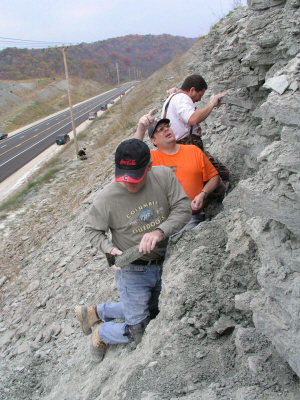
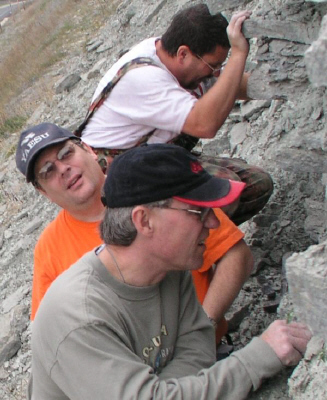
"Hey! Don't throw that slab down here!"
Well, as Bob illustrates below, look for layers of shale that
are in situ, that is to say, the layers are not washed down from higher
up.
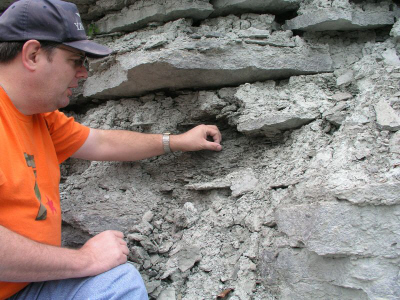
Then examine each layer for signs of crinoid stems. The
picture below shows two crinoid stems that have not yet weathered out of the
shale.
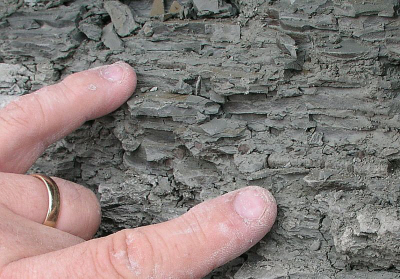
Carefully clear the shale from above the stems, as the picture
below shows. If you are lucky, there will be a calyx (head) on the end of that
crinoid stem.
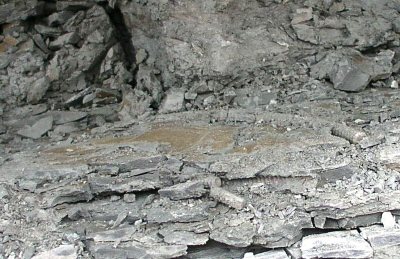
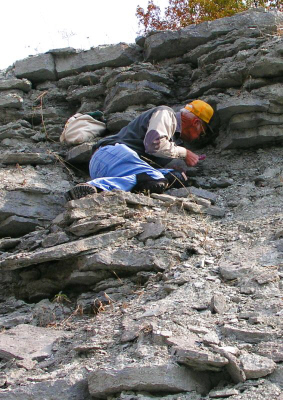
Next Page: Finding Brachiopods
Page 1: Introduction and the Search
for Trilobites
Page 2: Crinoid Hunting
Page 3: Finding Brachiopods
Page 4: After Collecting
Page 5: Some Fossils Found That Day: Trilobites
Page 6: Some Fossils Found That Day: Crinoids and
Corals
Page 7: Other Fossils and Minerals Found That Day
Back to the Field Trip Index
Back to the Dry Dredgers Home Page
The Dry Dredgers and individual contributors reserve the rights to all information, images, and content presented here. Permission to reproduce in any fashion, must be requested in writing to admin@drydredgers.org .